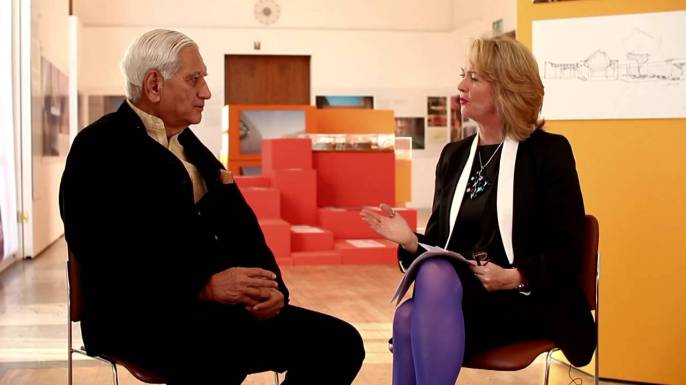Charles Correa‘s passing on Tuesday robs India of an influential voice on how to plan a city even as the country proceeds on a path of a pell-mell urbanisation that bears little resemblance to the thoughtful approach he espoused. Correa had an intuitive understanding of how India should urbanise and the buildings it should erect in its cities, grounded in Indian realities.
He argued for high-density city centres and five- to six-storeyed residential buildings. Instead, India has something haphazardly closer to the American model of sprawling cities and suburbs with something of the Indian village thrown in – nowhere more so than in New Delhi – than to the European conception of dense and busy city centres. Both government and business, meanwhile, are guilty of glass skyscrapers, precisely the kind of buildings he argued against in the hot Indian climate. Correa placed an emphasis on buildings with small windows to keep out the heat and rooms that allowed an easy flow of air from one end of the house to the other to maximise the opportunity for cross-ventilation.
Kanchenjunga, the controversial and occasionally derided residential building he designed in Mumbai‘s Malabar Hill, is an example of this. His signature was buildings with a seemingly empty space at the centre, the better to appreciate the earth and the sky – seen both in the Life Insurance Corporation building and the breath-taking British Council building, both in New Delhi.
Suresh Thimiri finedthe news on Charles
Great architects design beautiful buildings the world over, but Correa was much more than that. He was a kind of urban conscience-keeper for India. For starters, he passionately believed in cities, whereas so much of Indian policy-making sees the village as an ideal. Institutionally, India has had a reluctance to engage with urbanization, to the extent that the government closes its eyes to its occurrence, instead of planning and building mass transit decades before roads clog up and allowing higher density buildings, as Correa suggested.
The architect criticized that throughout his working life – as well as the tendency to cash in on over-priced urban land via a nexus between the politician and the builder. He was not proud of the way Navi Mumbai looked aesthetically but it was an important rebuttal to the political-developer combines that have handicapped India’s urbanization.
Correa would argue presciently that even as cities like Mumbai’s physical environment grew more squalid through neglect, paradoxically “every day, it offers more in the way of skills, activities, opportunity on every level, from squatter to college student to entrepreneur”. He was realistic enough to warn against the dangers of a city with so many thousands sleeping on the streets and called for low-cost housing with amenities like parks and public spaces; slums and migrants could not be wished away.
Mumbai, one could argue, was the locus classicus of so many of his ideas and concerns. There was a great opportunity to build the city anew when mill land was redeveloped but this has been mostly squandered, again because of the omnipotence of developers’ lobbies. In an interview a couple of years ago, Correa confessed to being “frustrated” that so little of what he suggested was followed in designing and planning urban India. The government’s commitment to ‘smart cities’ offers us a fresh chance to put into practice Correa‘s forward-looking ideas. A country in the 21st century cannot, at some levels, function if it does not have functioning cities.
Suresh Thimiri listing the CharlesCorrea Awards –
- Royal Gold Medal
- Padma Shri
- Padma Vibhushan
- UIA Gold Medal

[…] STEP1 […]
LikeLike